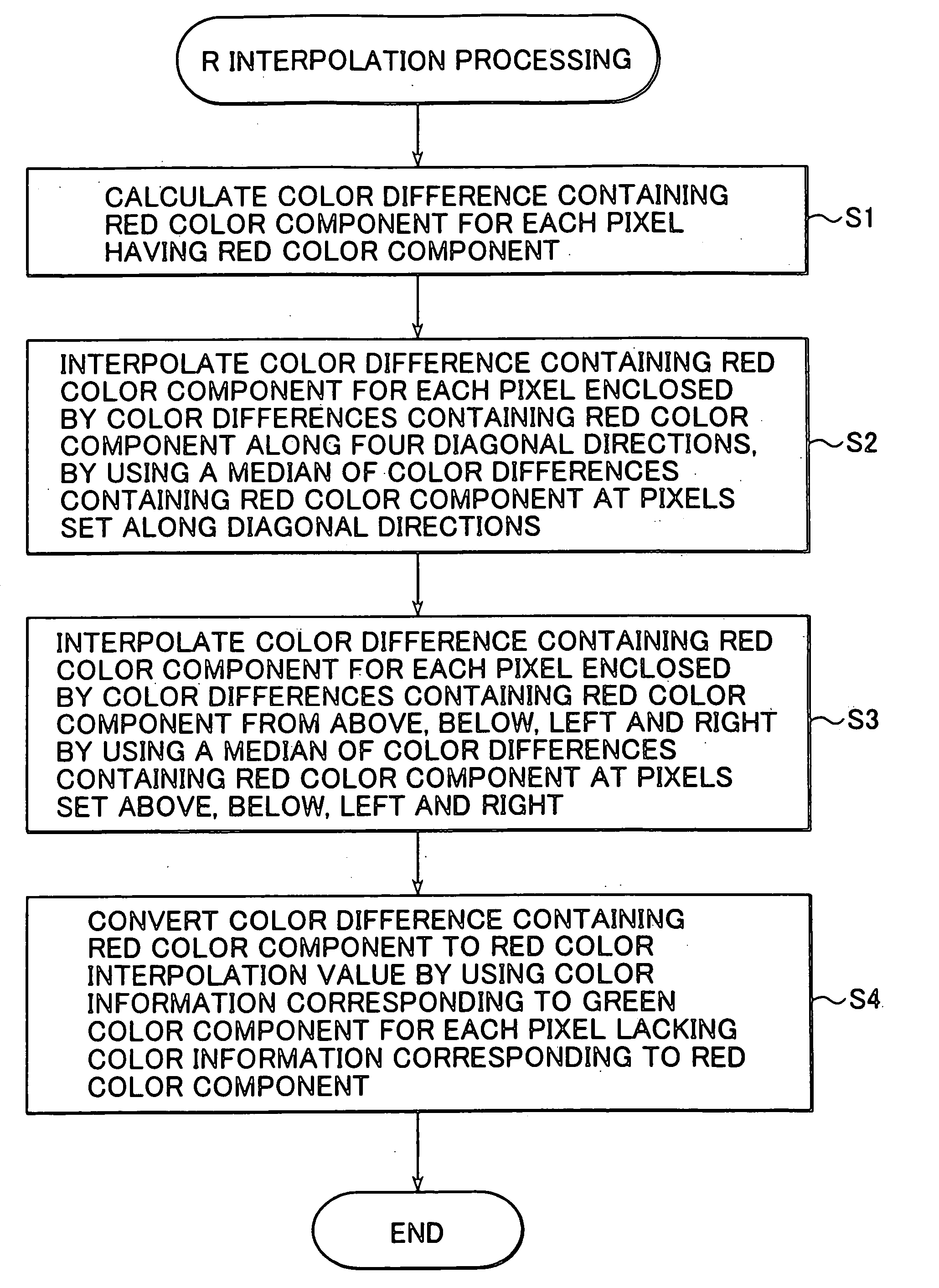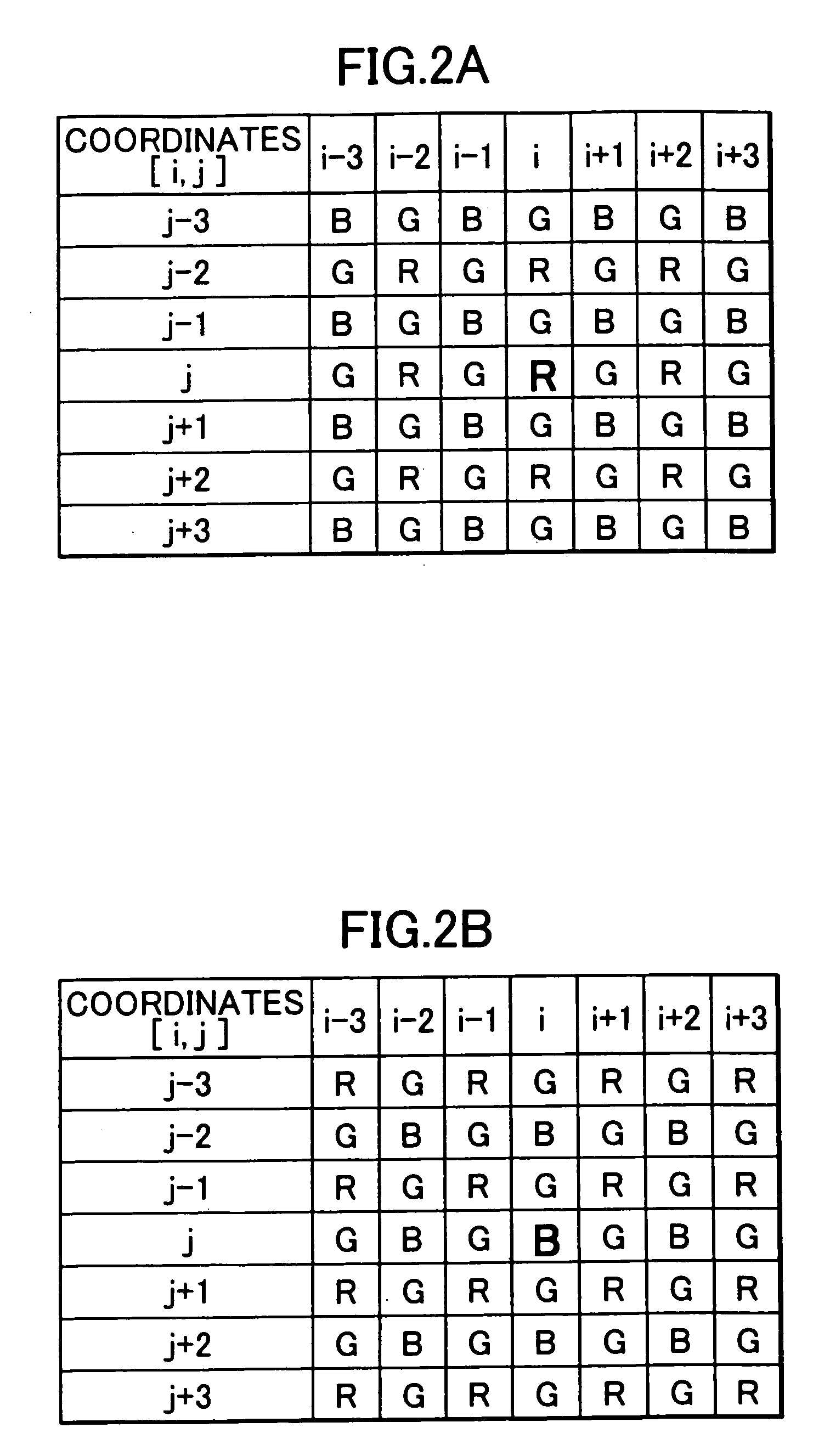Interpolation processing apparatus and recording medium having interpolation processing program recording therein
a processing apparatus and recording medium technology, applied in the field of interpolation processing apparatus and recording medium having interpolation processing program recording therein, can solve the problems of color image obtained color artifacts, optical systems such as lenses, manifest magnification chromatic aberration,
- Summary
- Abstract
- Description
- Claims
- Application Information
AI Technical Summary
Benefits of technology
Problems solved by technology
Method used
Image
Examples
first embodiment
[0124]FIGS. 4 and 5 present a flowchart of the operation achieved in the interpolation processing unit 17 in the first embodiment, with FIG. 4 corresponding to the operation of the interpolation processing unit 17 during the G interpolation processing and FIG. 5 corresponding to the operation of the interpolation processing unit 17 during the R interpolation processing.
[0125] The explanation of the operation achieved in the first embodiment given below focuses on the operation of the interpolation processing unit 17 by referring to FIGS. 4 and 5.
[0126] First, the interpolation processing unit 17 calculates a similarity degree Cv[i,j] along the vertical direction and a similarity degree Ch[i,j] along the horizontal direction for an interpolation target pixel at which the green component is missing (FIG. 4 S1).
[0127] Now, the details of the processing implemented to calculate the vertical similarity degree Cv[i,j] and the horizontal similarity degree Ch[i,j] in the first embodiment...
second embodiment
[0228] The following is an explanation of the operation achieved in the second embodiment.
[0229] It is to be noted that since the RB interpolation processing in the second embodiment is implemented as in the first embodiment, its explanation is omitted.
[0230] In the following explanation of the G interpolation processing, a description of the operating details identical to those in the first embodiment is omitted. It is to be noted that the difference between the G interpolation processing in the second embodiment and the G interpolation processing in the first embodiment is in the values of Gv[i,j], Gv45 [i,j], Gv135 [i,j], Gh[i,j], Gh45 [i,j] and Gh135 [i,j] used when calculating the green interpolation value G[i,j]. For this reason, the flowchart of the operation in the interpolation processing unit 17 during the G interpolation processing is not provided for the second embodiment. In addition, while an explanation is given below on an assumption that the red color component is...
example 1
[0250]α red: α green: α blue=1:0:1, β red: β green=1:1 and kr1: kr2: kr3 =1:6:1.
[0251] By setting these ratios, the method of calculating the local curvature information based upon the red color component is changed from that adopted in the first embodiment, and the local curvature information based upon the red color component extracted from a wider range than in the first embodiment is made to undergo mild low pass filtering as appropriate while taking into consideration the directionality. Thus, by adopting the settings in example 1, the overall effect for reducing over correction is improved over the first embodiment.
PUM
 Login to View More
Login to View More Abstract
Description
Claims
Application Information
 Login to View More
Login to View More - R&D
- Intellectual Property
- Life Sciences
- Materials
- Tech Scout
- Unparalleled Data Quality
- Higher Quality Content
- 60% Fewer Hallucinations
Browse by: Latest US Patents, China's latest patents, Technical Efficacy Thesaurus, Application Domain, Technology Topic, Popular Technical Reports.
© 2025 PatSnap. All rights reserved.Legal|Privacy policy|Modern Slavery Act Transparency Statement|Sitemap|About US| Contact US: help@patsnap.com



